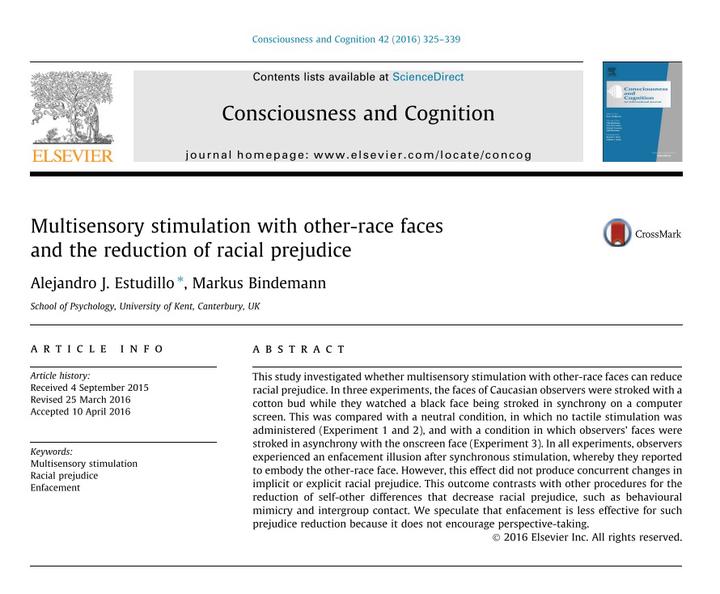
Abstract
This study investigated whether multisensory stimulation with other-race faces can reduce racial prejudice. In three experiments, the faces of Caucasian observers were stroked with a cotton bud while they watched a black face being stroked in synchrony on a computer screen. This was compared with a neutral condition, in which no tactile stimulation was administered (Experiment 1 and 2), and with a condition in which observers' faces were stroked in asynchrony with the onscreen face (Experiment 3). In all experiments, observers experienced an enfacement illusion after synchronous stimulation, whereby they reported to embody the other-race face. However, this effect did not produce concurrent changes in implicit or explicit racial prejudice. This outcome contrasts with other procedures for the reduction of self-other differences that decrease racial prejudice, such as behavioural mimicry and intergroup contact. We speculate that enfacement is less effective for such prejudice reduction because it does not encourage perspective-taking.